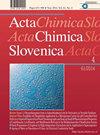Direct determination of kynurenic acid with HPLC-MS/MS method in honey.
IF 1.3
4区 化学
Q3 CHEMISTRY, MULTIDISCIPLINARY
引用次数: 0
Abstract
Kynurenic acid (KYNA) has been attributed many beneficial properties, such as antioxidant, antiproliferative, anti-inflammatory, and anti-obesogenic, as it is believed to affect metabolism and weight gain. A rapid and simple HPLC-MS/MS method for the determination of kynurenic acid (KYNA) in honey has been developed. HPLC-MS/MS system allowed us to perform the analyzes without any special extraction or treatment of the samples. The study was carried out on different honeys: Chestnut (C), Linden (L), Acacia (A), Spruce (S), Silver Fir (SF), Forest (Fo) and Flower (F). The highest mean concentration, 682 μg/g, was determined for chestnut honey, making it one of the foods with the highest KYNA content.
HPLC-MS/MS法直接测定蜂蜜中的犬尿酸
犬尿酸(KYNA)被认为具有许多有益的特性,如抗氧化、抗增殖、抗炎和抗肥胖,因为它被认为可以影响新陈代谢和体重增加。建立了一种快速简便的HPLC-MS/MS测定蜂蜜中犬尿酸(KYNA)的方法。HPLC-MS/MS系统使我们无需对样品进行任何特殊的提取或处理即可进行分析。以板栗蜜(C)、椴树蜜(L)、金合欢蜜(A)、云杉蜜(S)、银杉蜜(SF)、森林蜜(Fo)和花蜜(F)为研究对象,板栗蜜的平均浓度最高,为682 μg/g,是KYNA含量最高的食品之一。
本文章由计算机程序翻译,如有差异,请以英文原文为准。
求助全文
约1分钟内获得全文
求助全文
来源期刊

Acta Chimica Slovenica
化学-化学综合
CiteScore
2.50
自引率
25.00%
发文量
80
审稿时长
1.0 months
期刊介绍:
Is an international, peer-reviewed and Open Access journal. It provides a forum for the publication of original scientific research in all fields of chemistry and closely related areas. Reviews, feature, scientific and technical articles, and short communications are welcome.
 求助内容:
求助内容: 应助结果提醒方式:
应助结果提醒方式:


